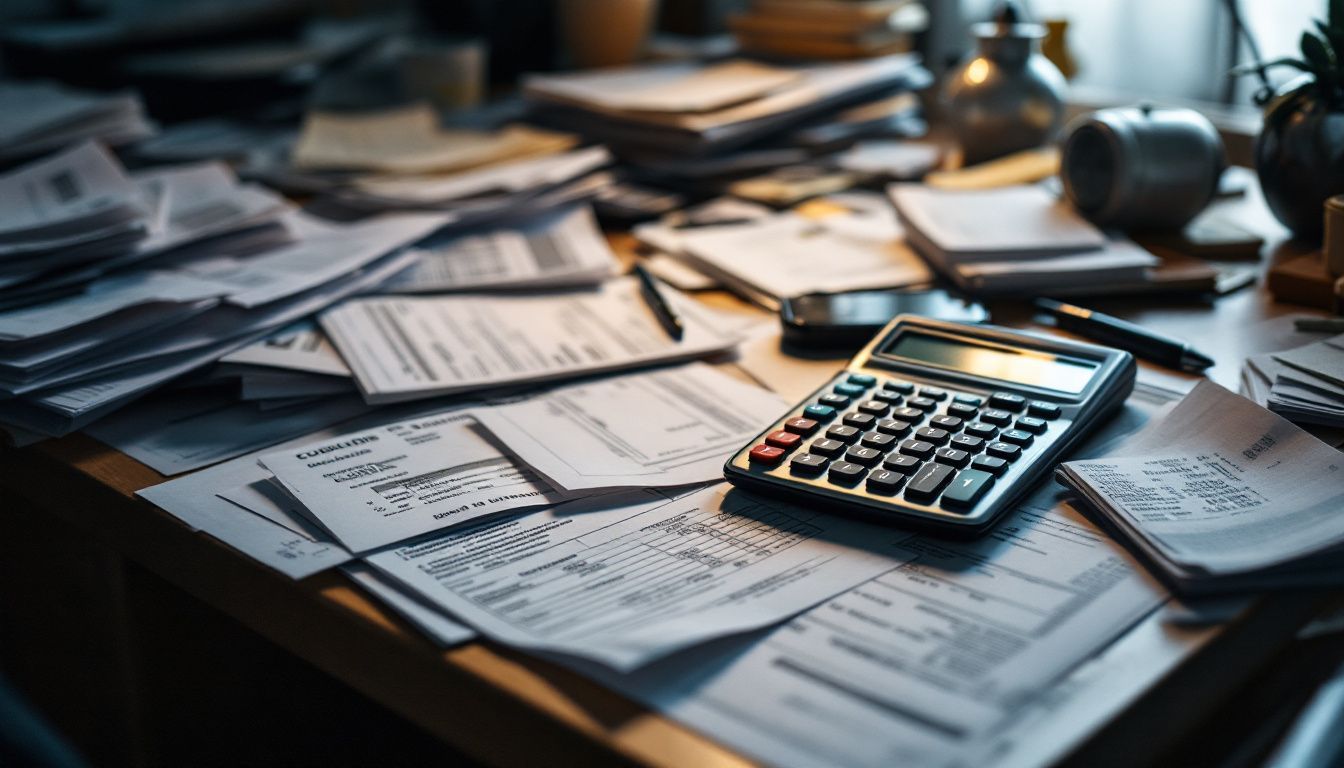Understanding CRA debt and its consequences is the first step in finding a solution. Owing money to the Canada Revenue Agency (CRA) can lead to serious problems like wage garnishment or losing your assets.
2. Options for Resolving Debt with the CRA:.
You have several choices if you owe money to the CRA. You can set up a payment plan yourself, get help from a licensed insolvency trustee, or ask directly for different ways to pay back what you owe.
3. Free Consultation and Acting Quickly:.
Getting advice as soon as you find out there’s a problem is smart. Many professionals offer free talks to help you figure out what to do next.
4. How to Make a Request and Prepare for Your Payments:.
Making payment plans with the CRA is easy by phone or online. Know how much money you make and spend each month before reaching out. Use your CRA account online to keep things simple.
5. Staying Up To Date and Changing Your Payment Arrangement:.
Life changes
Types of debt collected by the CRA
The CRA collects many kinds of debt. These include taxes people owe, money from benefit overpayments, and other debts to the government. If someone does not pay on time, the CRA will try to collect this money.
People can have tax debt for different reasons. Maybe they did not pay enough income tax last year. Or maybe they got too much money from benefits like GST or child support. The CRA needs this money back to help run the country’s programs and services.
Implications of not paying your debt
Ignoring debt with the CRA can lead to serious problems. Penalties and interest can grow quickly on unpaid taxes. This will make your total amount due much higher. Wage garnishment may occur, meaning the CRA could take money directly from your paycheck.
Assets may be seized as well if you do not take action.
Seeking tax relief is crucial to avoid these issues. If you cannot pay in full or on time, contact the CRA for payment options. A payment arrangement allows you to pay smaller amounts over time.
Managing CRA debt effectively helps prevent further financial hardship and keeps your finances on track.
Options for Resolving Debt with the CRA
There are several ways to resolve debt with the CRA. You can set up a payment plan or consult a licensed insolvency trustee. It’s key to explore all your options. Learn more about how you can take steps towards resolving your tax issues.
Arrange a payment plan
You can arrange a payment plan with the Canada Revenue Agency (CRA) if you have tax debt. This plan allows you to pay your debt in smaller, manageable amounts over time.
- Contact the CRA directly. Reach out to them by phone or online. Explain your situation and express your need for a payment plan.
- Gather your financial information. List your monthly income and expenses before you call. This will help you suggest a realistic payment amount.
- Use the CRA’s online calculator. The calculator helps determine what monthly payments you can afford. It aids in creating an affordable repayment option.
- Be ready to negotiate terms. Discuss how long you need to repay the debt while offering reasonable monthly payments. The CRA may accept different options based on your case.
- Make sure to stay current with future taxes. Paying past debts is crucial, but keeping up with new tax obligations protects against further issues.
- Provide any necessary documents quickly. If the CRA asks for proof of income or other paperwork, send it right away to avoid delays in setting up your plan.
- Monitor your progress regularly through your CRA online account. Keep track of how much you’ve paid and what’s left on your debt.
- Act quickly if unable to keep up with payments later on! Contact the CRA as soon as possible to discuss any changes needed for your payment arrangement.
Setting up a payment arrangement allows for paying in several installments over time, making it easier to manage tax liabilities without added stress from wage garnishments or asset seizures.
Consult with a licensed insolvency trustee
If you struggle to pay your CRA debt, consider talking to a licensed insolvency trustee. They can help you understand your options for debt resolution. A trustee offers advice and can create a plan that works for your situation.
They know about tax debt solutions and can assist in negotiating with creditors. Seeking help from a reputable agency is smart, especially if you’re worried about garnish of wages or dealing with unpaid taxes.
It’s crucial to act quickly to find financial solutions that fit your budget.
Request a payment plan
You can request a payment plan if you cannot pay your debt to the CRA in full. This option allows you to make smaller payments over time.
- Contact the CRA: Reach out to the Canada Revenue Agency as soon as you realize you cannot pay your debt on time. You can explain your situation and ask about payment options.
- Gather Your Information: Before calling, collect important details. Have your income and expenses ready. This information helps the CRA understand what you can afford.
- Use CRA Online Tools: Sign in to your CRA online account. The website offers tools like a payment arrangement calculator, which shows how much you can pay each month.
- Create a Payment Plan: Discuss with the CRA how much you can pay each month. They may allow for several installments over time, giving you more flexibility.
- Payment Arrangement Terms: Understand the terms of your payment plan before agreeing to it. Make sure you know when payments are due and how long it will last.
- Stay in Touch with CRA: Keep communicating with the CRA during this process. If anything changes in your financial situation, let them know right away.
- Seek Professional Help if Needed: If you’re unsure about handling tax debts, consider consulting with financial experts or licensed insolvency trustees for guidance and support.
- Manage Your Payments Wisely: Stick to your payment schedule once it’s set up. Making regular payments helps show that you are serious about resolving tax debts and helps avoid further issues like garnishment of wages.
- Address Outstanding Tax Obligations Promptly: Taking action quickly can prevent additional penalties or interest from accruing on your tax debts.
- Check for Debt Relief Options: Explore different options offered by the CRA, including partial payments and other forms of debt management that may help reduce what you owe over time.
Following these steps helps manage outstanding tax obligations effectively through a structured repayment plan with the CRA.
Free Consultation and Acting Quickly
Many Canadians face debt with the CRA. A free consultation can help you understand your options. Acting quickly is crucial for resolving tax debts. If you cannot pay in full or on time, contact the CRA to discuss payment options.
They offer ways to repay your debt over time.
Seeking assistance from a reputable agency may also be wise. This allows you to compare repayment options and find solutions for CRA debt. The sooner you act, the better chance you have at managing your situation effectively.
Next, learn how to request a payment plan and prepare for your payments.
How to Make a Request and Prepare for Your Payments
To make a request, gather your income and expense information. Log in to your CRA account or call them to set up your payment plan.
Schedule payments online or by phone
Scheduling payments with the CRA can help you manage your tax debt. This process gives you flexibility and control over your finances.
- Access the CRA Website: Sign in to your CRA online account. You will find options for setting up payments easily.
- Use the Phone: Call the CRA directly to set up a payment plan. A trained agent can guide you through the steps.
- Choose Payment Frequency: Decide how often you want to make payments. You can choose weekly, bi-weekly, or monthly schedules.
- Calculate Your Budget: Before scheduling, know your monthly income and expenses. This helps ensure that your chosen payment plan is affordable.
- Provide Needed Information: Be ready to share details about your financial situation. The CRA may ask about your income and other debts before agreeing on a plan.
- Confirm Your Payment Arrangement: After setting up your plan, keep a record of it. This includes noting down any confirmation numbers or emails received from the CRA.
- Check Payment Options: Ask what methods are available for making payments. You can often pay by bank transfer, credit card, or online banking.
- Use the Payment Arrangement Calculator: The CRA offers this tool on their website to help determine an amount that fits into your budget comfortably.
- Stay Informed About Changes: If there are changes in your financial situation, contact the CRA quickly to discuss any adjustments needed for your payment arrangements.
- Seek Assistance if Necessary: If managing these payments feels overwhelming, consider reaching out to credit counseling agencies for support with debt negotiation and financial planning.
Calculate your monthly income and expenses
Calculating your monthly income and expenses is a key step in managing your debt. This helps you see how much you can afford to pay the CRA.
- List all sources of income. Write down every amount you earn each month. Include your salary, any side jobs, and other sources like rental income or benefits.
- Track your fixed expenses. These are bills that do not change from month to month. Include rent or mortgage, utilities, insurance, and loan payments.
- Identify variable expenses. These costs can change each month. Look at groceries, transportation, entertainment, and personal spending.
- Calculate total income and total expenses. Add up all the amounts from steps one through three. Use this info to find out if you have a balance left after paying your bills.
- Determine your remaining funds for debt payments. Subtract total expenses from total income to see how much money you have left over each month.
- Set realistic payment goals with CRA options in mind. If there is enough leftover money, decide how much can go towards CRA debts each month.
- Use a payment arrangement calculator offered by the CRA if needed. This tool helps find an affordable plan based on what you can pay regularly.
- *Keep records of all calculations and changes in finances regularly. Document everything clearly for future reference and adjustments as needed.
Following these steps will help address outstanding tax obligations with the CRA effectively while making sure you stay on track financially.
Sign in to your CRA online account
Sign in to your CRA online account. This step helps you view your tax debt and payment options.
- Access Your Account
Go to the CRA website. Click on “Sign In” at the top right corner. You will need your user ID and password.
- View Your Balance
After signing in, check your balance. It shows how much you owe to the CRA.
- Explore Payment Options
Look for payment choices in your account. You can find options for making payments over time.
- Set Up a Payment Arrangement
If you cannot pay all at once, set up a payment plan. The CRA lets you pay in installments.
- Use the Payment Calculator
Find the payment arrangement calculator on the site. It helps you figure out an affordable monthly payment plan.
- Keep Track of Your Payments
Use your account to monitor payments made and those left due. Staying updated keeps you informed about your financial situation.
- Get Help if Needed
If you have questions, contact CRA through their online chat or phone line for assistance with tax debts or payment arrangements.
- Change Your Arrangement if Necessary
If your situation changes, sign in again to adjust your payment plan as needed.
Using these steps can help manage overdue tax payments effectively with the CRA’s support options available for Canadians struggling with debt.
Before you call
Before you call the CRA, it helps to prepare. This can save time and ensure a smoother conversation.
- Know your debt amount. Write down how much you owe the CRA. This includes any interest or penalties added to your balance.
- Gather income details. Calculate your monthly income. List all your sources of money, like paychecks or benefits.
- List your expenses. Write down what you spend each month. Include rent, bills, food, and other costs.
- Have payment options in mind. Think about how much you can pay each month towards your tax debt. The CRA offers options for paying in installments and partial payments.
- Explore support resources. If you cannot afford to pay your debts to the CRA, look for help from reputable agencies that assist with tax debts.
- Check the CRA payment arrangement calculator online. This tool estimates an affordable payment plan based on your financial situation.
- Make sure to sign in to your CRA online account before calling if possible, as this makes it easier to manage and view your account details during the call.
- Prepare questions for clarity on repayment options for tax debt and requesting debt forgiveness from CRA if needed.
- Be ready to discuss a manageable debt management plan that fits into your budget while addressing outstanding tax obligations effectively.
- Keep all these documents handy when you call so that you can provide accurate information quickly while negotiating tax settlements with the CRA representative.
Staying Up to Date and Changing Your Payment Arrangement
Staying up to date with your CRA payment arrangement is key. If your situation changes, you can adjust how much you pay or when you pay it. The Canada Revenue Agency offers options for people who cannot afford to pay their debt in full or on time.
You can set up a payment plan that allows for payments over time.
The CRA provides a payment arrangement calculator to help find an affordable plan. Always check in with the CRA if you need to change your arrangements. Seeking assistance from a trusted agency can also help manage and reduce debts effectively.
FAQs
1. What is the guide “Options and Solutions for Resolving Debt with the CRA”?
The guide titled “Options and Solutions for Resolving Debt with the CRA” helps people find ways to handle overdue tax payments.
2. How can I seek assistance with my tax debts?
You can seek assistance by exploring various CRA payment options presented in our guide, which offers solutions for resolving your debt with the Canada Revenue Agency (CRA).
3. Are there different solutions available for handling my debt with the CRA?
Yes, there are many options available that you can use to resolve your debt issues with the CRA as outlined in our comprehensive guide.
4. Can this guide help me if my tax payments are overdue?
Absolutely! Our Guide provides a range of solutions specifically designed to assist individuals who are struggling with overdue tax payments to the CRA.









